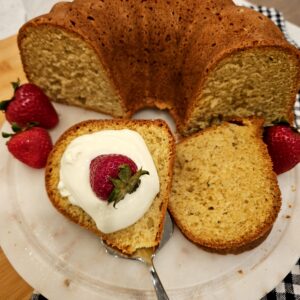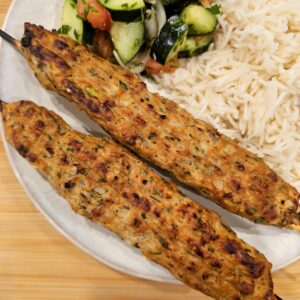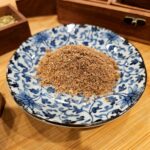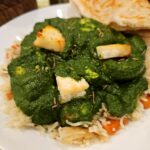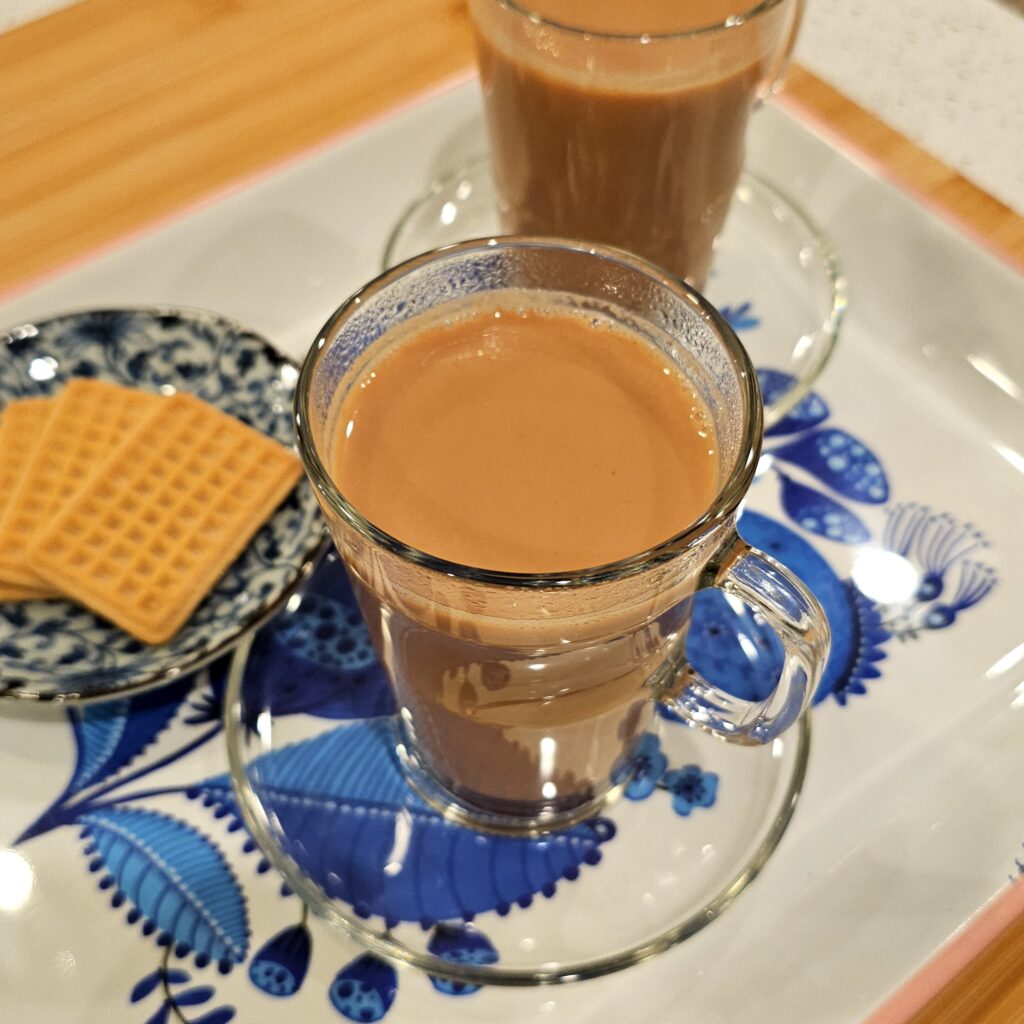
How to Make Indian Masala Chai
Recent Recipes
This homemade CHAI is rich, warming, and deeply flavorful—just like the kind we grew up sipping with family. Whether you go the classic route or caramelize the sugar for an extra layer of depth, both methods deliver that cozy, spiced comfort in every sip. And don’t skip the “pulling” step—it’s the secret to truly great chai.
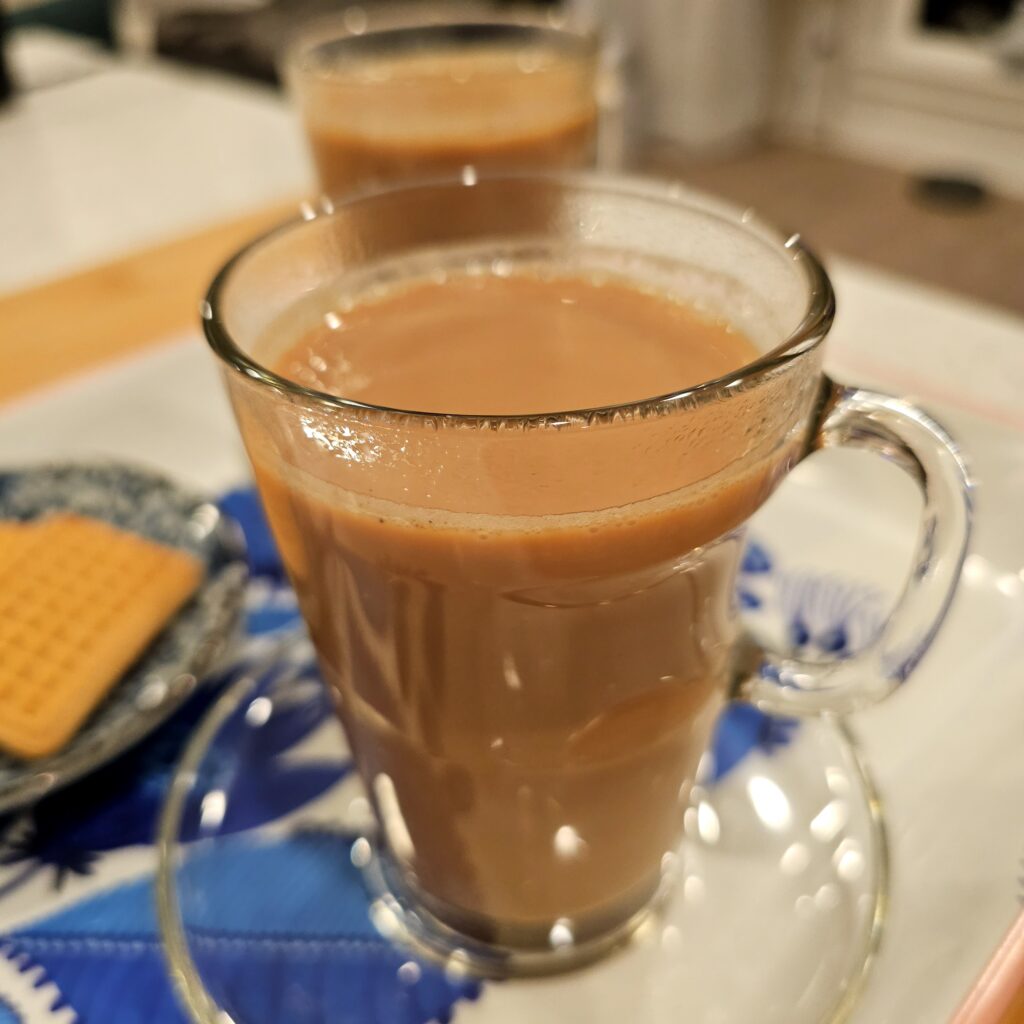
Chai is more than just a drink in our home—it’s a ritual, a comfort, and a connection to family. I first learned to make chai the traditional way by watching my mom. She never used a recipe, just her senses and proportions she knew by heart. This version is hers, passed down through generations, and it’s still the one we turn to most often.
But over time, we started playing around with the recipe and added a little twist of our own. One day, on a whim, we decided to caramelize the sugar before adding the water and spices. That simple change added a rich, slightly smoky sweetness to the chai that made it feel a little indulgent while still staying true to the comforting essence of the original. Now we switch between the two methods depending on our mood—sometimes sticking with tradition, sometimes leaning into something new.
Whether you’re making chai for the first time or it’s part of your daily routine, we hope you enjoy these two versions as much as we do. They both capture the heart of what chai means to us: something warm, familiar, and always worth sharing.
IN THIS RECIPE...
What do I need to make masala chai?
- CHAI MASALA: Either homemade or store-bought, this brings warmth, depth, and complexity.
- GINGER: Freshly grated ginger gives the chai its signature bite and warmth. It’s what makes a cup of chai feel cozy and invigorating at the same time.
- WATER: Used as the base to simmer the spices and extract their flavors before the milk and tea are added.
- BLACK TEA BAGS: We use basic black tea bags (like Assam or Darjeeling-based blends) for that strong, malty backbone. They stand up well to the spices and milk without getting lost.
- MILK: Whole or 2% milk adds creaminess and richness, helping the spices meld together into one smooth, comforting drink.
- SUGAR: We typically use regular granulated sugar, but you can adjust the sweetness to your taste or use jaggery, honey, or another sweetener.
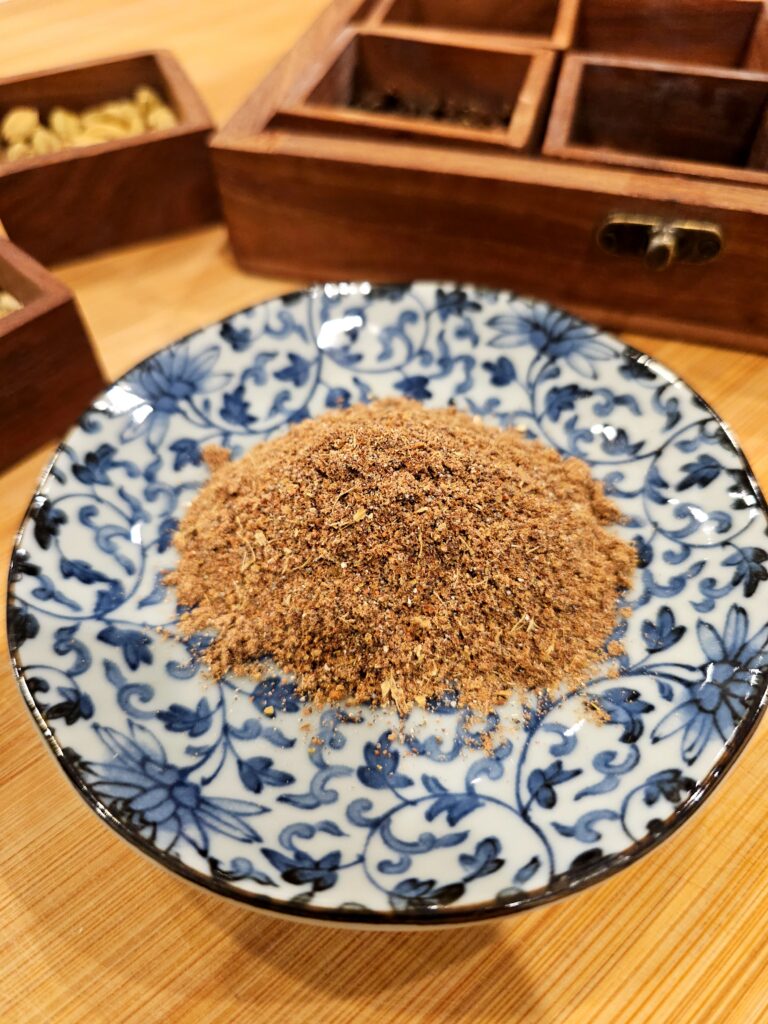
Step-by-Step Instructions
Method 1 – Classic
1. Toast the Masala
In a medium saucepan over medium heat, add 2 teaspoons of your chai masala. Our blend includes cinnamon, fennel seeds, cardamom, star anise, black pepper, and cloves—all ground and mixed ahead of time. Toast the spices gently for about 30 seconds until fragrant. This step wakes everything up and gives your chai a rich, deep base flavor.
2. Simmer with Water and Ginger
Increase the heat to high and pour in 2¼ cups water along with 1 inch of freshly grated ginger. Bring to a boil, then reduce the heat to low and let the mixture simmer gently for 3–5 minutes. The ginger should mellow slightly, and the masala will infuse the water with its warm, spicy notes.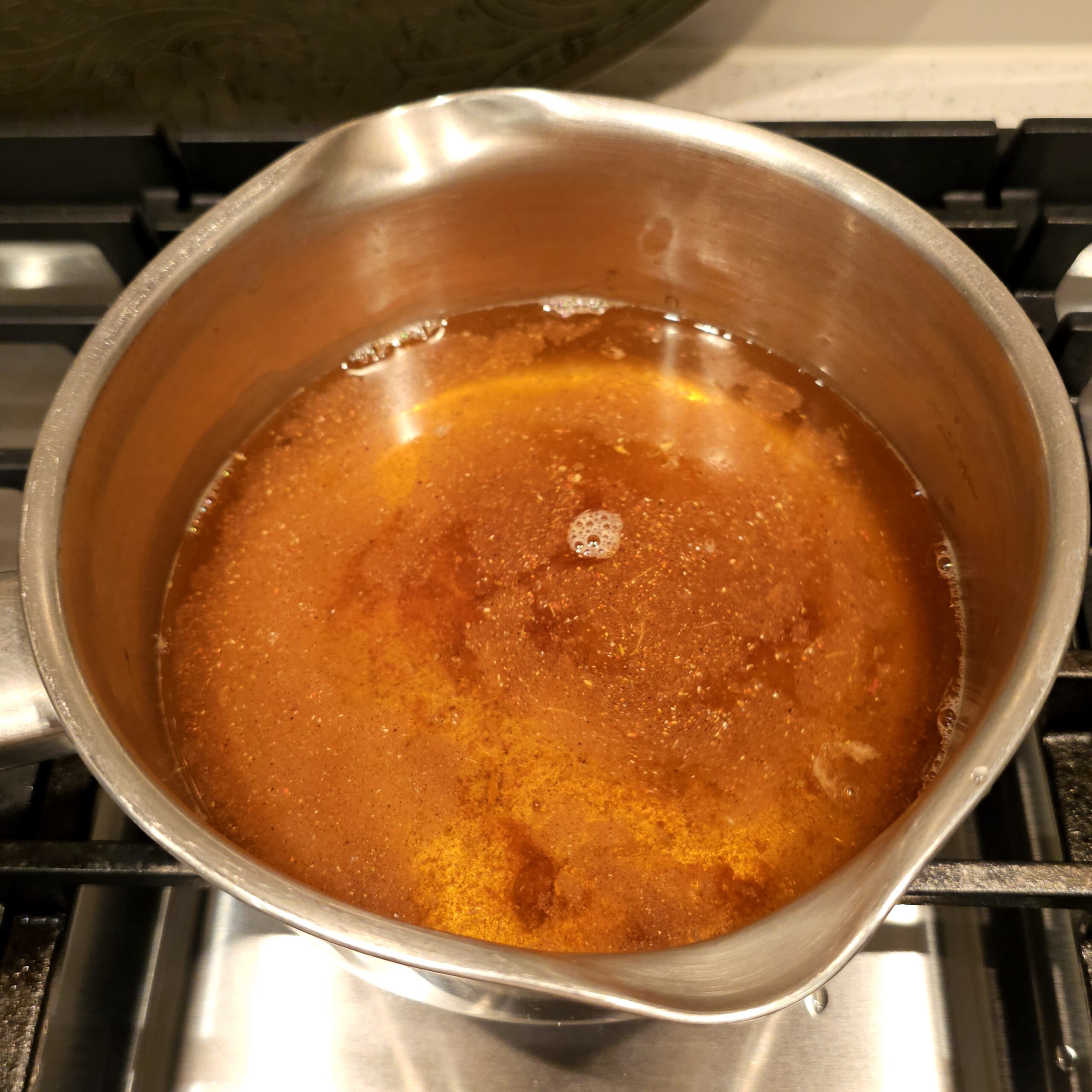
3. Add Milk, Tea, and Sugar
Pour in 1 cup of whole or 2% milk, then add 2 black tea bags and 5 teaspoons of sugar (or your preferred sweetener). Stir gently.
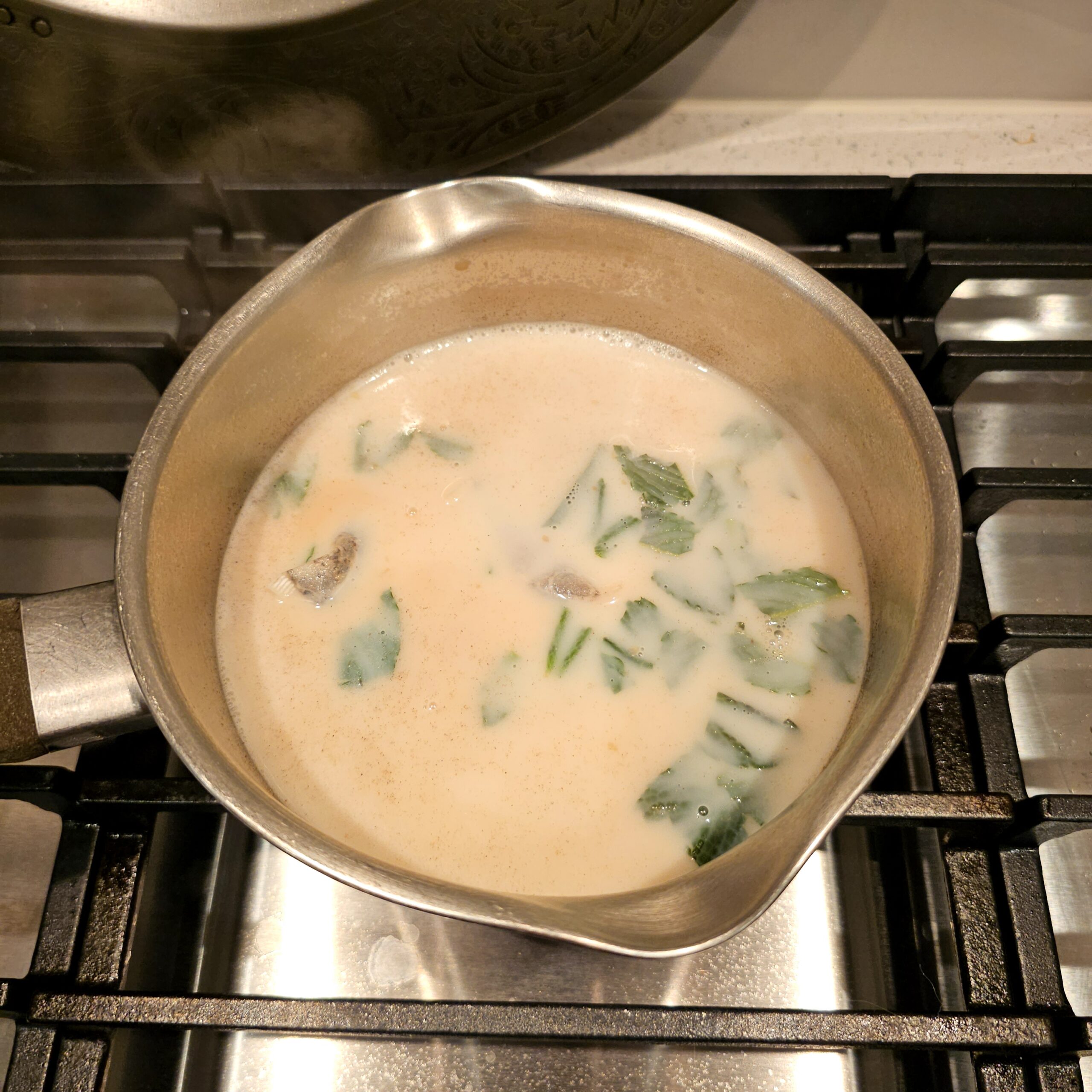
4. Double Boil the Chai (“Pulling”)
Bring the chai to a boil, then immediately remove it from the heat for a few seconds. Return the pot to the heat and bring it to a boil again. Repeat this “pulling” method once or twice—doing so helps emulsify the milk and intensify the flavors, a trick passed down in many Indian kitchens.
5. Strain and Serve
Let the chai sit for 3–5 minutes to settle. Strain through a fine mesh strainer into your cups and enjoy hot.
Method 2 – Caramelized Sugar
1. Caramelize the Sugar
In a medium saucepan over medium heat, add 5 teaspoons of sugar and let it melt and caramelize for about 5 minutes, stirring occasionally. You’re looking for it to just begin turning amber—it’ll smell slightly nutty and sweet.
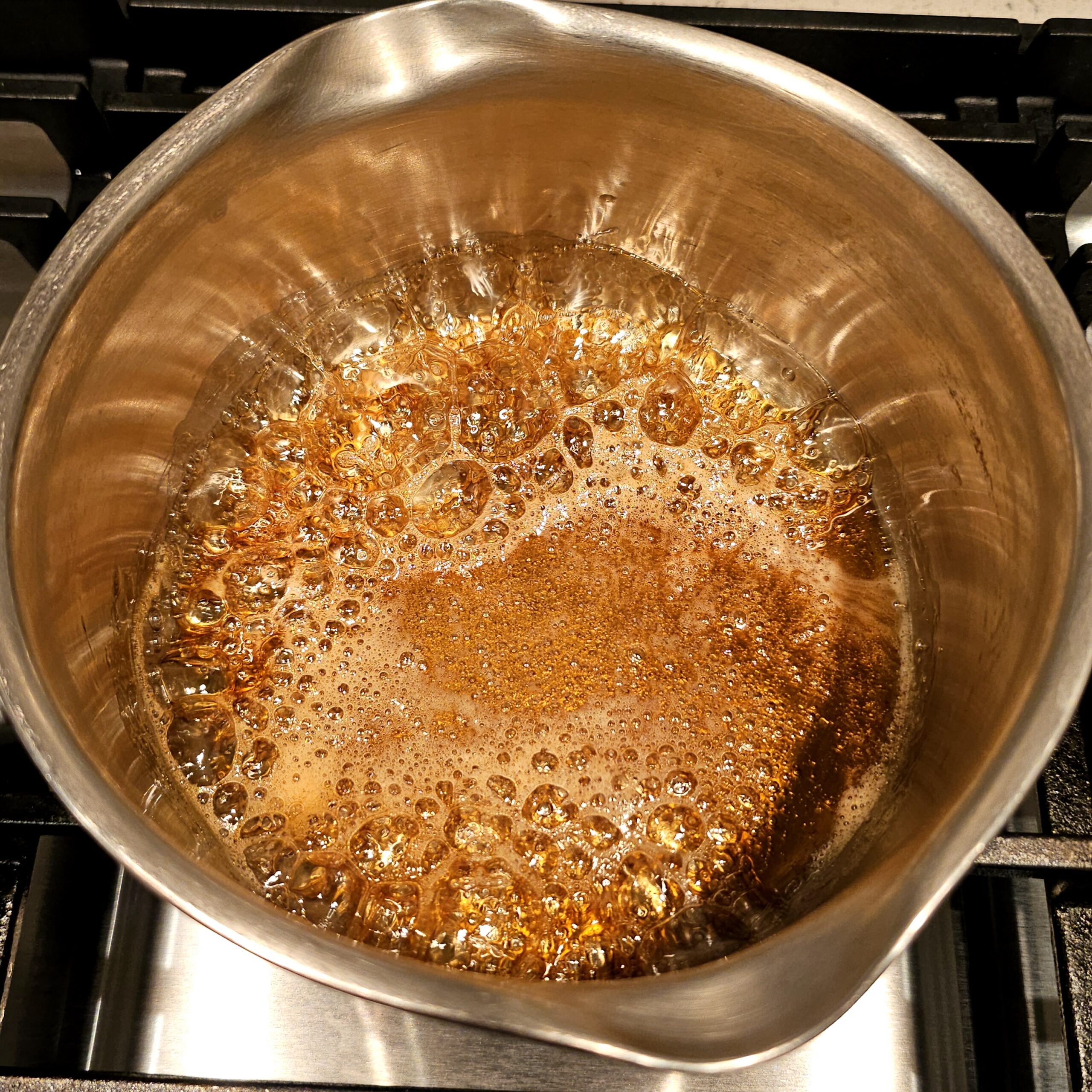
2. Deglaze with Water and Add Spices
Carefully add 2¼ cups water, the grated ginger, and 2 teaspoons of chai masala to the pan (be cautious as the sugar may bubble vigorously at first). Stir to combine and bring to a boil. Reduce heat and simmer for 3–5 minutes to allow the spices and caramel to infuse.
3. Add Milk & Tea
Pour in 1 cup of milk, add 2 black tea bags, and stir well.
4. Pull the Chai
Just like in the classic method, bring the chai to a boil, remove from heat, and repeat once or twice. This gives the chai a silkier texture and blends everything together beautifully.
5. Strain and Enjoy
Let sit for a few minutes, strain, and enjoy with a splash of extra milk or a sprinkle of masala on top if you’d like.
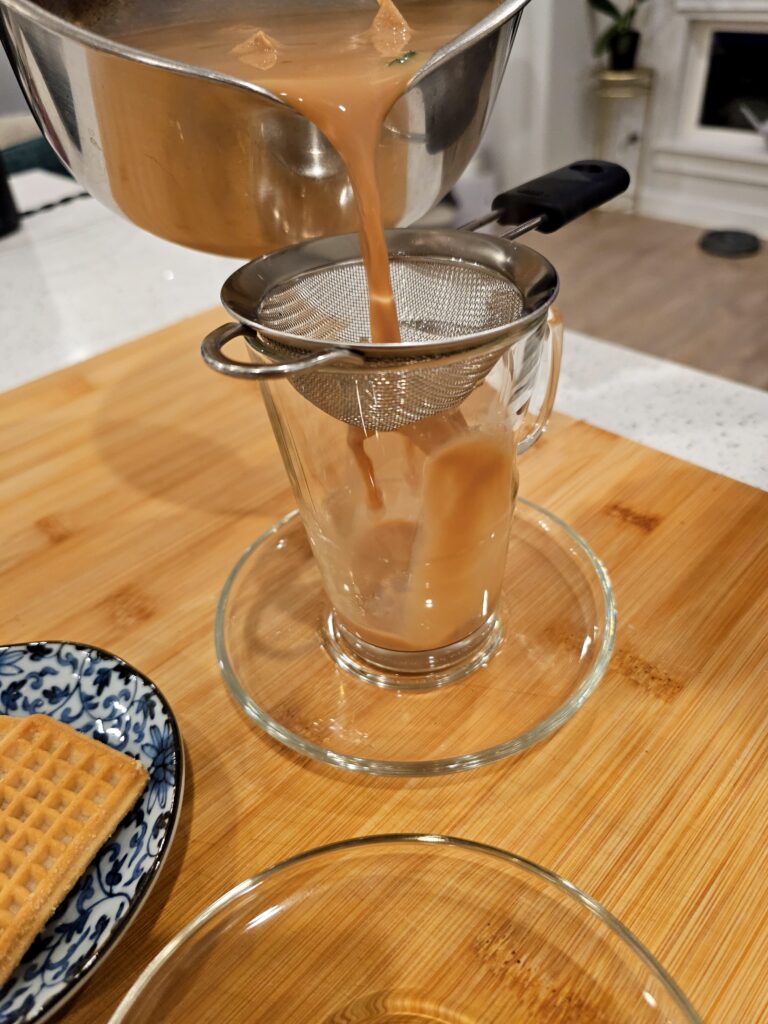
What’s the deal with twice boiling/pulling the chai?
If you grew up in a home where chai was made daily, chances are you’ve seen this in action—your mom or dad standing at the stove, bringing the chai to a bubbling boil, then pulling it off the heat… only to bring it right back up again.
This method is often called “pulling the chai” or “twice boiling.” It’s a traditional technique used in many Indian households that does a few key things: it helps emulsify the milk into the tea, it intensifies the flavor of the spices and tea leaves, and it gives the chai that smooth, rounded texture we all crave.
And there’s actually some solid science behind why this method creates richer, more flavorful chai. When you first bring the tea, milk, and spices to a boil, several things happen at once: the volatile oils in your spices begin to release into the liquid, infusing it with deep aroma and flavor. At the same time, the tannins in the black tea steep more intensely in the presence of heat, giving your chai its signature body and slight bitterness.
But here’s where pulling makes a difference: removing the pot from heat briefly stops the rolling boil and lets the mixture settle. This cooling phase helps prevent the milk from scorching or curdling, while giving the spices a chance to steep more gently. Then, when you bring it back to a boil, the agitation re-emulsifies the fat in the milk and redistributes all those flavor compounds. This repeated cycle of boiling and resting develops a more balanced flavor, smoother mouthfeel, and creamier texture — almost like a gentle reduction and steep in one.
It’s also a natural way to aerate the chai and slightly thicken the liquid as the proteins and sugars in the milk become more integrated. The result is chai that tastes more layered, more aromatic, and more homey.
Related Recipes
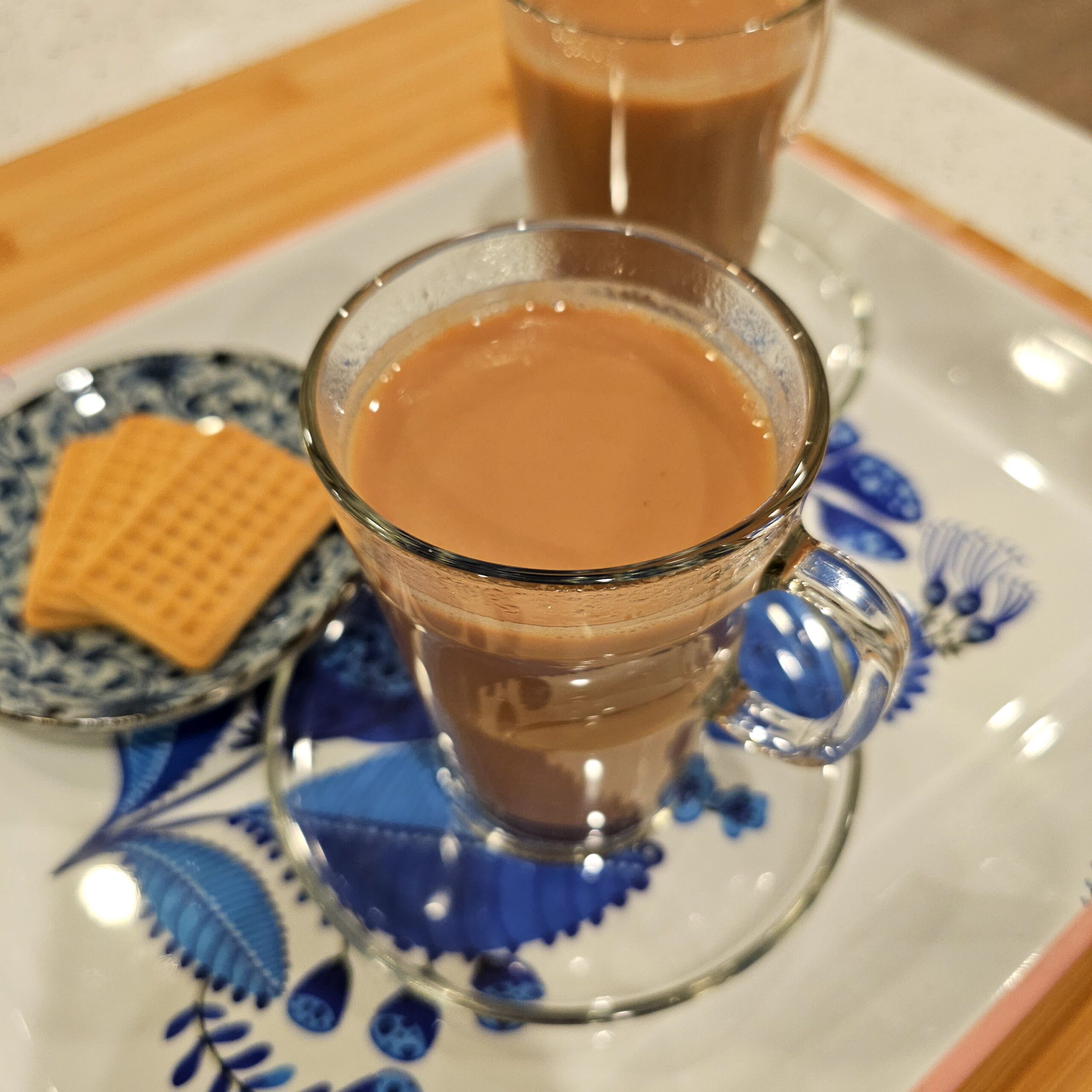
Indian Masala Chai
Equipment
- 1 medium pot
Ingredients
- 2 teaspoons chai masala homemade or store-bought
- 1 inch piece of ginger grated
- 2 ¼ cups water
- 2 black tea bags
- 1 cup whole or 2% milk
- 4 teaspoons sugar or other sweetener
- Instructions
Instructions
Method 1 – Classic
- Add the chai masala to a medium saucepan over medium heat. Toast the dry spices for about 30 seconds.
- Turn the heat up to high, add the water and ginger, and bring to a boil. Reduce the heat to low and simmer gently for 3-5 minutes.
- Pour in the milk, add the tea bags and sugar, and stir. Bring the chai back to a boil then remove from the heat for several seconds. Put the pot back on high heat, bring to a boil, and again immediately remove from the heat. This method is called “pulling the chai” or “double boiling” in some Indian households and helps to enhance the flavor and emulsify the milk.
- Allow the chai to sit for 3-5 minutes then serve by pouring through a strainer and enjoy!
Method 2 – Caramelized Sugar
- Add the sugar to a medium saucepan over medium heat. Caramelize the sugar by stirring occasionally for about 5 minutes until you see the sugar begin to brown.
- Add the water, ginger, and chai masala and bring to a boil. Reduce the heat to low and simmer gently for 3-5 minutes.
- Pour in the milk, add the tea bags, and stir. Bring the chai back to a boil then remove from the heat for several seconds. Put the pot back on high heat, bring to a boil, and again immediately remove from the heat.
- Allow the chai to sit for 3-5 minutes then serve by pouring through a strainer and enjoy!

